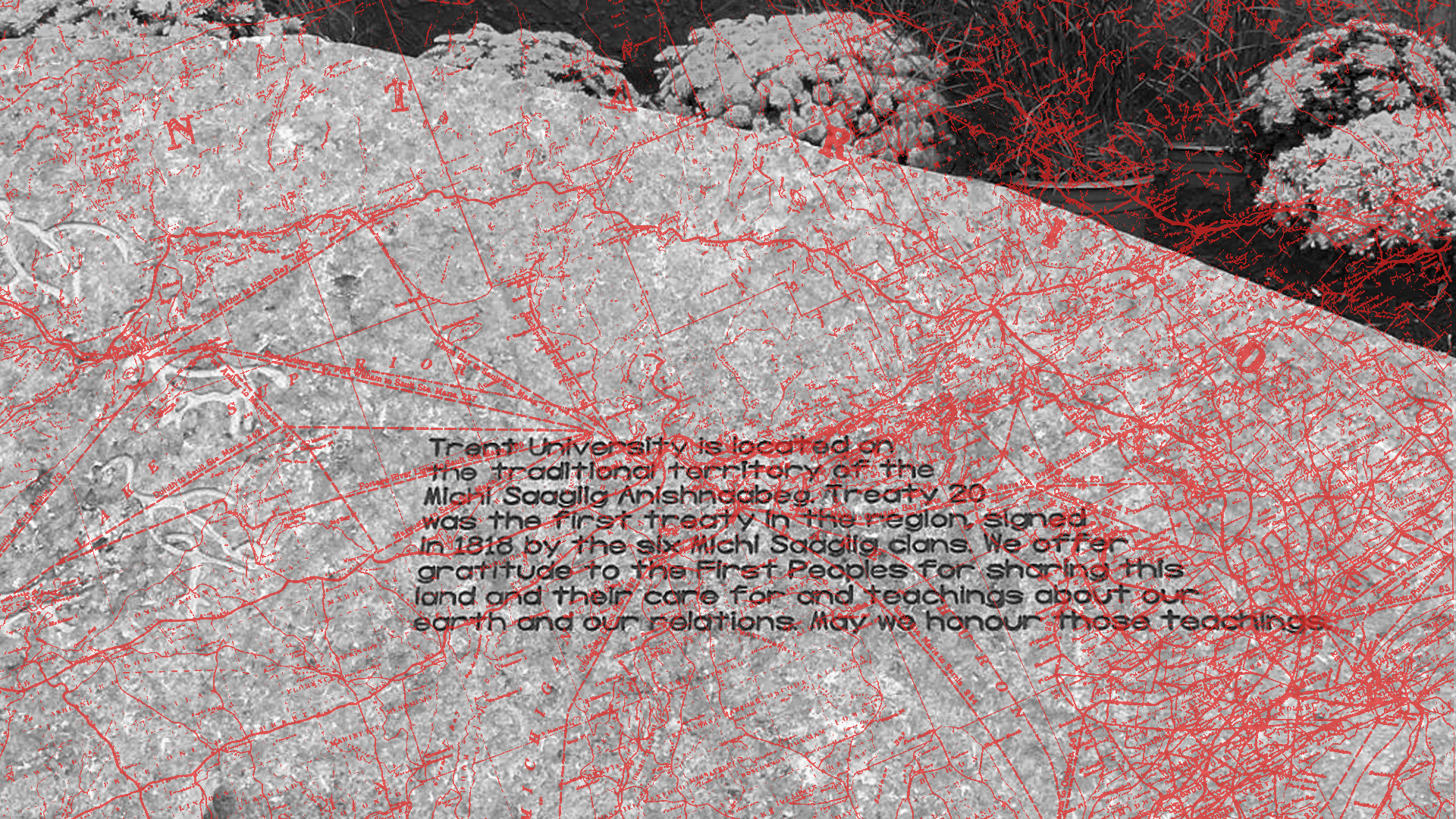On November 9th, Settlers Taking Action and Responsibility at Trent (START) hosted a film screening of Inaakonigewin Andaadad Aki: Michi Saagiig Treaties for Treaties Week. Kim Goodkey of START explained Treaties Week as “A way to mark the fact that treaties were signed, and maybe bring awareness to the fact that the way we think about treaties is probably not the way they actually happened.”
Inaakonigewin Andaadad Aki: Michi Saagiig Treaties is a film produced by Melissa Dokis, with support from Anne Taylor and from the Curve Lake First Nation Council. It was made in partnership with Curve Lake First Nation, Curve Lake Cultural Centre, and Curve Lake First Nation Gaming Revenue Fund.
The film is about the history of the treaties of Southern Ontario, including the Williams Treaty and Treaty 20, which cover the area in and around Peterborough. Treaties are legally binding agreements between the Crown and Indigenous peoples and communities. There are 46 treaties covering the land in Ontario.
The film covered the history of treaties, starting with Wampum Belts that were used to mark agreements and decisions about land use by different Indigenous groups throughout Turtle Island. The 1763 Royal Proclamation laid out rules around consultation with Indigenous peoples and how treaties should work. These were not followed. Treaties from that time were very unclear about what was being given, especially when both sides had very different ideas about land ownership.
The government would also come in after the initial signing to add new clauses and change parts of the treaty, as well as not honouring initial agreements. Treaty payments that were agreed to be paid every year would stop being paid after a few years, or would be turned into lump sum payments. One of the most restrictive treaties of the area is the Williams Treaty, which was signed in 1923, signed away the rights to hunt, fish, and gather on the land. The film discussed the belief held by people in Curve Lake First Nation that the government put in this clause after the chiefs had already signed the treaty.
The film pointed out the double standard of the government heavily enforcing some parts of the treaty and policing Indigenous peoples but not upholding their parts of the agreement. It ended with the fact that everyone living in Ontario are all treaty people and all have a responsibility to uphold and maintain treaties.
After the film there was a question period with Jack Hoggarth, Assistant Professor in the Chanie Wenjack School for Indigenous Studies for Michi Sagiig Culture and Knowledge, and Chair of Anishinabeg Knowledge. He was able to expand upon the topics of the film and share stories about how the treaties continue to affect Curve Lake First Nation and Burleigh Falls. He was also generous enough with his time to sit down and answer my questions.
When asked about what treaties week means to him Hoggarth said, “Treaty week for me is for not only the Settler community but also First Nations to engage within dialogue of what the treaties mean. What they ultimately represent, what they hold, what the commitment was between nation-to-nation agreements. We have to remember that these treaties are still living documents, that they hold the promises of the Crown and the fiduciary responsibilities that came with it to our people, to the First Nations people. Treaty Week is almost like an extension of Truth and Reconciliation.”
He discussed the imbalance of power and understanding between the two groups signing the treaties. “It’s important to know that through translation, were the proper things explained to us about what was in that treaty? That we’re to own the land, we never had a word, we never had a concept to own the earth, to own our mother the earth. It was very foreign to us, it was a very foreign concept, it was a colonial concept that was brought forward. So how do you explain that to a group of people that don’t speak English?” He continued, “We understood it as, we were sharing this land, we were sharing the land with the newcomers. That we weren’t signing our rights away to all these important pieces of this territory.”
Hoggarth expressed the importance of learning and doing research into the treaties you live upon. Knowing who signed them, who the First Nations were, and what the agreements were. He drew attention to the fact that there is a First Nation that is a part of Treaty 20 and acknowledged by the Ontario Government that is not a part of any land acknowledgements by Trent University, the Kawartha Nishnawbe First Nation.
November 15th 2023 marks the 100-year anniversary of the signing of the Williams Treaty. With this day it is important to remember the legacy of the treaty on the Indigenous people of the area, and how they were unable to have access to parts of their land.
We are all treaty people and need to honour and uplift the treaties every week of the year, not just during Treaty Week.


.png)

.jpg)





.jpg)


.jpg)


%20(14).png)






.png)